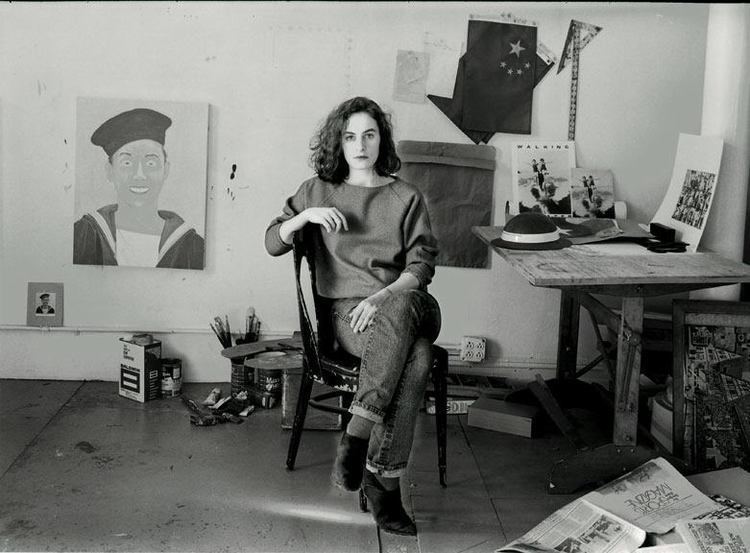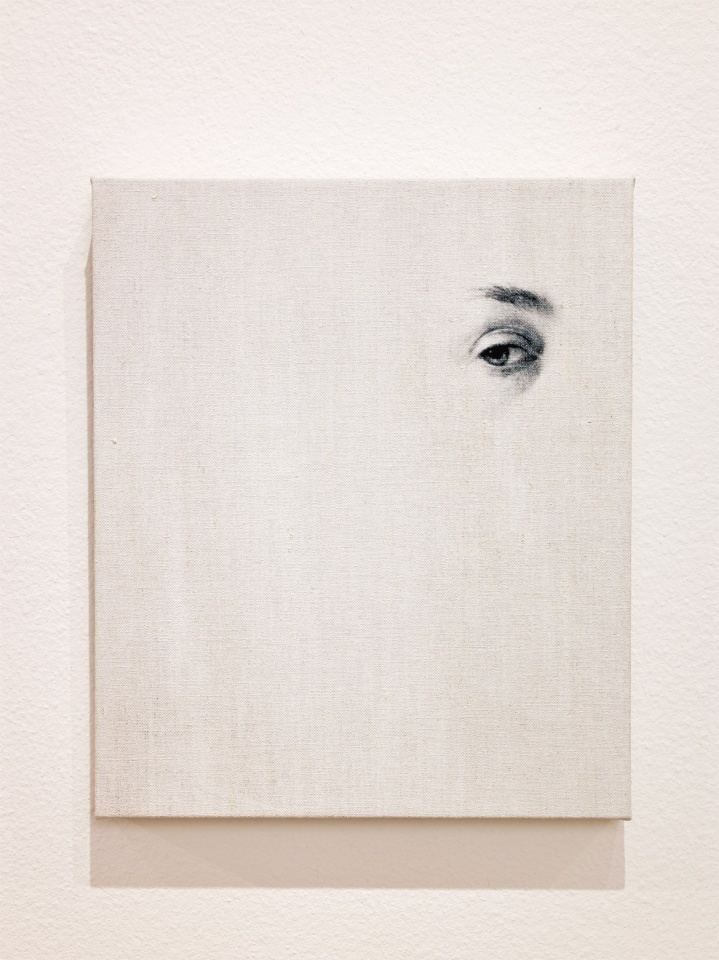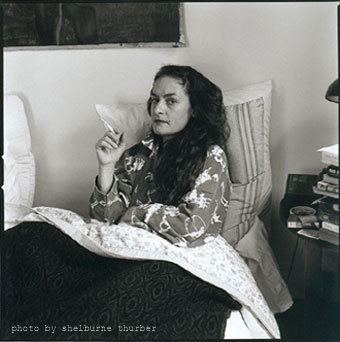Nationality American Name Annette Lemieux | Role Artist Movement The Pictures Generation | |
 | ||
Books Annette Lemieux, The Appearance of Sound: Exhibition April 21, 1989-July 5, 1989 | ||
Annette lemieux american artist
Annette Lemieux (born 1957 in Norfolk, Virginia) is an American artist who emerged in the early 1980s generation of “picture theory” artists (David Salle, Jack Goldstein, Cindy Sherman, Barbara Kruger, Richard Prince). Lemieux brought to the studio a discipline equally based on introspection, and the manifestations of an ideological minimalism. Process is a key component in the execution of her works over the past three decades, creating the lure to the confrontation of issues of social and historical urgency. Lemieux has been the recipient of awards from the National Endowment of the Arts and Brown University as well as an honorary Doctorate in Fine Arts from Monserrat College of Art. Presently, in addition to her studio and exhibition schedule, she is a senior lecturer at Harvard University in the area of visual and environmental studies.
Contents
- Annette lemieux american artist
- Hirshhorn Eye Annette Lemieux
- Early life
- Work
- Collections
- Recent Exhibitions
- Literature
- References

Lemieux is represented by Kent Fine Art in New York.

Hirshhorn Eye: Annette Lemieux
Early life

Annette Rose Lemieux was born in Norfolk, Virginia. Her father Joseph was in the Marines, and the family lived in a house close to the base. When Lemieux's father was called overseas, her mother, Margaret, moved with their two daughters - Annette and Suzette - to her hometown of Torrington, Connecticut. Later on, she received her Bachelor of Fine Arts in painting from the University of Hartford in Connecticut.
Work

In early works like, It’s a Wonderful Life,1986 [named after the 1946 Frank Capra film], Lemieux incorporated multiple forms of popular media to create a narrative in the form of self-doubt, personal vulnerability, along with an awareness of the absurdist political/religious/economic histories we accumulate as a civilization in a never-ending current. Following the legacies of Robert Rauschenberg and John Cage, she works to narrow the gap between “art” and “life”. Lemieux's works resist the traps of a “signature style,” and she has referred to her shows looking more like group shows rather than a single artist's. Her work surprises us, challenges her audience to keep up, and resists the conformity of the brand. As stated by Peggy Phelan, “For Lemieux, the art object offers her thoughts and feelings a way to travel . . . Art is her way of responding, both publicly and intimately, to the ongoing predicament of our lives”.
Lemieux works from a repertoire of real objects and images from films and books featuring reproductions of historical photographs from the forties and fifties, which she calls her “landscape.” Her practice reflects a deep commitment to content and well as process, incorporating intellectual analyses of social codes with an emphasis on psychological and emotional content. Fundamentally interdisciplinary in content and form, Lemieux’s work is a continual exploration and explication of our cultural constructs and how objects that reflect the self define the self within the culture. In her review of Lemieux's major retrospective "The Strange Life of Objects," Elizabeth Michelman explains that, "[In] addressing her content-laden material systematically, not sentimentally, Lemieux places objects and images in predicaments that are highly structured and memorable. In both two- and three-dimensional formats, she appropriates and wittily recontextualizes furnishings, texts and photographs rescued from history, popular culture and personal records."
In her recent show entitled Unfinished Business at the Carpenter Center, Harvard University, Lemieux explored the territory between object, mediated memory, personal experience and cultural history that has informed her practice for three decades. Lemieux’s objects and imagery derive directly from the world as it exists, not from the recesses of a private imagination that must search itself to produce the substance of invented images. With representative examples of her work in over 50 public collections, Lemieux has been the focus of two recent exhibitions organized by the Krannert Art Museum and Harvard University.
Collections
Lemieux's work can be found in the permanent collections of numerous art museums, including the Museum of Modern Art, New York; The Metropolitan Museum of Art, New York; The Whitney Museum of American Art, New York; Victoria & Albert Museum, London; Walker Art Center, Minneapolis; Solomon R. Guggenheim Museum, New York; Yale University Art Gallery, New Haven; New York Public Library; Museum of Contemporary Art; Chicago, Museum of Fine Arts, Boston; Fisher Landau Center, Long Island City, as well as many other museums throughout the world. Additionally, she has received awards and grants from the National Endowment for the Arts, Brown University, and the Kaiser Wilhelm Museum, as well as other institutions. In 2009, she also received an honorary Doctorate in Fine Arts from Montserrat College of Art as well.
